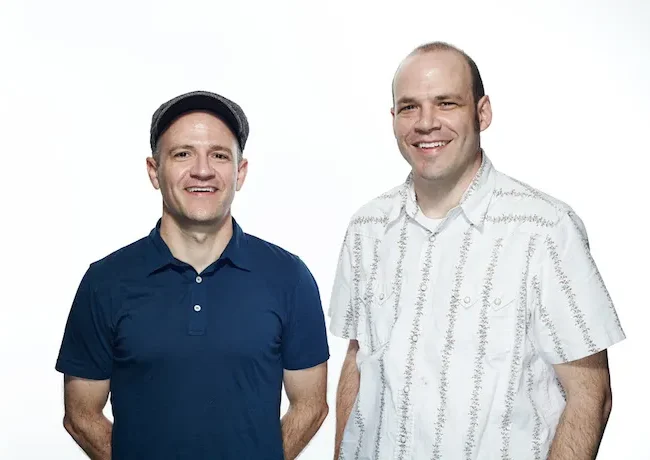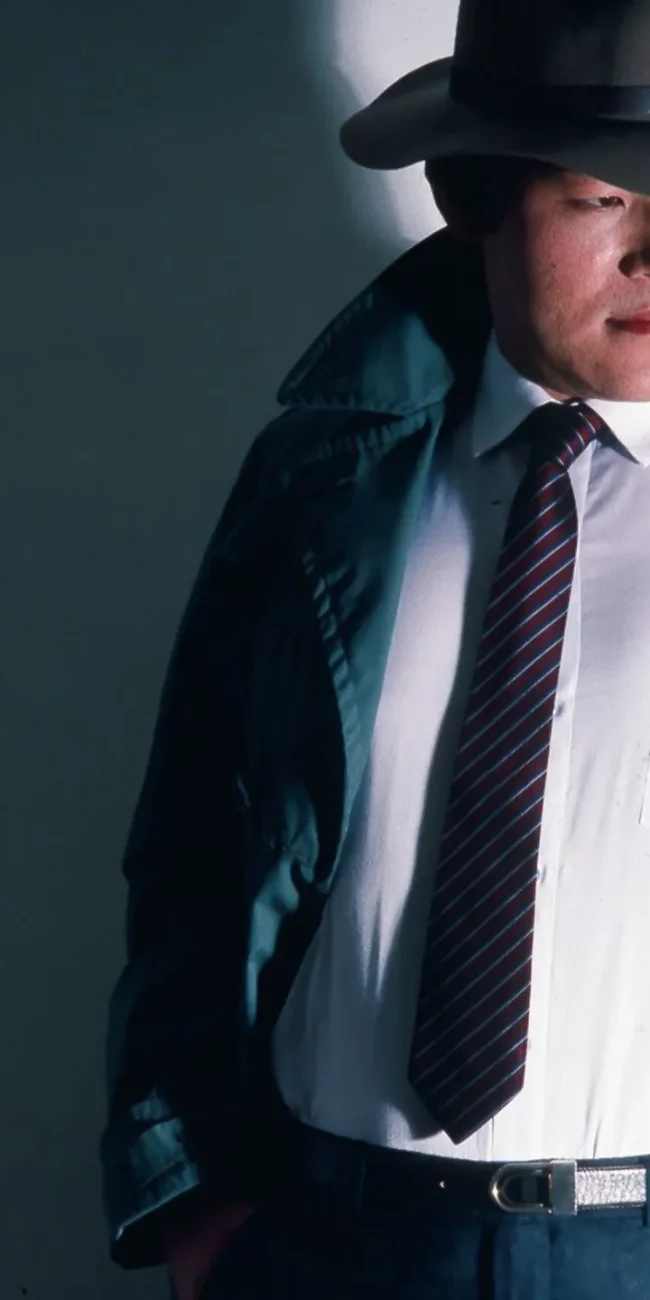A Conversation with Zachary Wigon (THE HEART MACHINE)
(The Heart Machine was picked up for distribution by FilmBuff and opens theatrically at Cinema Village in NYC on Friday October 24th while simultaneously being made available via Video on Demand. It world premiered in the Narrative Feature Competition at the 2014 SXSW Film Festival before next screening at the Sarasota Film Festival. Visit the film’s Facebook page to learn much more.)
Zachary Wigon first came to my attention when his impressive short film Someone Else’s Heart won Hammer to Nail’s December 2012 Short Film Contest. If the themes of digital technology and alienation are familiar, Wigon’s film distinguished itself through a surprising and meaningful approach to form and narrative. Wigon builds on the strength of his short film, carrying over the visual precision and elegance in its expansion to a feature. The Heart Machine stars talents John Gallagher Jr. (Short Term 12, The Newsroom) as Cody and Kate Lyn Sheil (Sun Don’t Shine, Green) as Virginia, long-distance lovers who know each other only through Skype. When Cody begins to suspect that Virginia is not in Berlin as she claims, it sends him on a tense and melancholy search for the truth.
I caught up with writer/director Zachary Wigon in Austin after his world premiere at the 2014 SXSW Film Festival. In a conversation that ranges from Skype on film to Kim’s Video, Wigon shared the process of making The Heart Machine.
Hammer to Nail: Your story is centered on technology, which to be honest, I usually find is kind of uncinematic. But I thought you used it in a way that was both really narrative and also really cinematic. How did you approach integrating technology into the story?
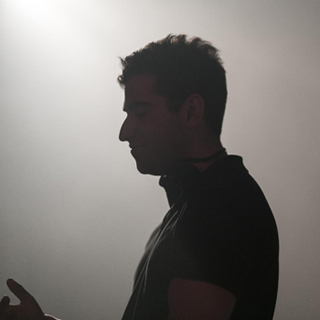 Zachary Wigon: That’s really great, because that was one of our big concerns, so I’m really glad you felt that it worked. What we did not want to do is to try to find some sort of magic bullet solution, so to speak… we didn’t want to have some sort of visual or aesthetic element that placed the presentation of the digital images in a separate realm from the other images in the movie. We just wanted it to be a part of the world, and then beyond that, trying to make it interesting. It’s funny, I’ve been getting this question a lot. And it was a little tricky for me to answer it at first, and I think the reason is because there really wasn’t any different way that we approached the digital stuff than how we approached shooting the rest of the movie. We just wanted the film to be as visually striking as possible, for a number of reasons. One of them being that it’s a drama, it’s a thriller, it’s a mystery, I guess there are different genres that are getting worked out throughout the course of the film. But regardless of what genre it ultimately falls into, I wanted it to feel as tense as a thriller throughout. And one of the ways to do that is to just have shots that are well-composed enough and well-framed enough that you hold the viewer’s attention sort of on a second-by-second level. So the shots all had to just be as interesting as they could be. In the case of the opening Skype scene, there’s one shot of his computer monitor, and it’s a single on [Virginia], and you get the reflection of [Cody] in the monitor, which we thought was really striking. Or there’s the final flashback toward the very end of the film where they’re having the Skype conversation, and the camera goes behind her, across the 180 [degree line], and then into the monitor, and past the monitor into the reflection of her eyes. So like everything else in the film, we just wanted to shoot it in as visually striking a way as possible.
Zachary Wigon: That’s really great, because that was one of our big concerns, so I’m really glad you felt that it worked. What we did not want to do is to try to find some sort of magic bullet solution, so to speak… we didn’t want to have some sort of visual or aesthetic element that placed the presentation of the digital images in a separate realm from the other images in the movie. We just wanted it to be a part of the world, and then beyond that, trying to make it interesting. It’s funny, I’ve been getting this question a lot. And it was a little tricky for me to answer it at first, and I think the reason is because there really wasn’t any different way that we approached the digital stuff than how we approached shooting the rest of the movie. We just wanted the film to be as visually striking as possible, for a number of reasons. One of them being that it’s a drama, it’s a thriller, it’s a mystery, I guess there are different genres that are getting worked out throughout the course of the film. But regardless of what genre it ultimately falls into, I wanted it to feel as tense as a thriller throughout. And one of the ways to do that is to just have shots that are well-composed enough and well-framed enough that you hold the viewer’s attention sort of on a second-by-second level. So the shots all had to just be as interesting as they could be. In the case of the opening Skype scene, there’s one shot of his computer monitor, and it’s a single on [Virginia], and you get the reflection of [Cody] in the monitor, which we thought was really striking. Or there’s the final flashback toward the very end of the film where they’re having the Skype conversation, and the camera goes behind her, across the 180 [degree line], and then into the monitor, and past the monitor into the reflection of her eyes. So like everything else in the film, we just wanted to shoot it in as visually striking a way as possible.
H2N: So when the actors were shooting those Skype scenes, were the conversations happening in real time?
ZW: Yeah. And that was a really big thing.
H2N: So you had the second actor in another room?
ZW: Yeah, we got really lucky. It was two different things. When we were at [Cody’s] apartment there was an apartment in that same building one floor up that we got a room in, and that’s where Kate was doing her stuff, as if she was in her apartment. And we mocked up that room to look just like the set of her actual apartment. And then when we were actually at Virginia’s apartment that was actually a two-bedroom apartment, we just never showed the second bedroom, and so John was in the second bedroom, which we had mocked up to look like Cody’s apartment. And that was really helpful. In the short we actually did do it pre-recorded, and I thought that the short was successful, but I felt like there was more that we could have done if we had had the room to do it all live. For a number of reasons, among them being that you would enable the actors to improv, and Kate and John did a fair amount of improv in some of the Skype scenes.
H2N: And in a phone conversation sometimes you break off a sentence, or you overlap, so that gives it a natural feel.
ZW: Yeah, there’s a cadence to it. And there’s an emotion and an affect that’s kind of being passed back and forth when you are on a live call with someone. So I was really happy that we were able to do it all live. I think it made a really big difference.
H2N: I’m sure your actors appreciated that too, to be able to play off each other.
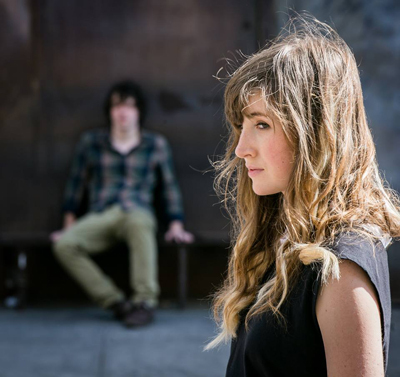 ZW: I think so. I mean it was a really big thing, because the whole success of the film hinges upon the audience accepting that these two people are in love. It’s like, how do you get it to seem like two characters are in love when you’re basically just showing them over Skype with one another? So there’s a lot at stake there. We did rehearsals in person with John and Kate before we shot, and that really helped build up that emotional connection. And then because they were on the same set when we were shooting, there was that ability for them to be interacting with one another in between takes, and when I gave them notes I could talk to both of them. If they had been separate I don’t know how possible it would have been to build up the warmth between the characters the way that I think we did.
ZW: I think so. I mean it was a really big thing, because the whole success of the film hinges upon the audience accepting that these two people are in love. It’s like, how do you get it to seem like two characters are in love when you’re basically just showing them over Skype with one another? So there’s a lot at stake there. We did rehearsals in person with John and Kate before we shot, and that really helped build up that emotional connection. And then because they were on the same set when we were shooting, there was that ability for them to be interacting with one another in between takes, and when I gave them notes I could talk to both of them. If they had been separate I don’t know how possible it would have been to build up the warmth between the characters the way that I think we did.
H2N: So you didn’t consider keeping them apart until they actually meet in the film?
ZW: I did, and John also did. We both at different times thought that could have been a really cool idea, to just rehearse over Skype, and then they actually meet in the scene where they meet [in the film]. But if you had like six months of prep for the two of them to talk over Skype then that would work. But with one week… that was what their schedules allowed. Kate was shooting House of Cards actually at the same time that we were making this movie, and then John, his main conflict was that he left to do Olive Kittredge a couple of days after this wrapped. So anyway, we didn’t have six months of prep to do that. [we laugh] So this was the next best option.
H2N: How did you cast the film?
ZW: Kate was on board first. I went to Tisch, NYU Film, and Kate was there for acting. We didn’t exactly know each other then, but I sort of knew who she was. We had mutual friends. And then she worked at a video store called Kim’s Video.
H2N: The one on St. Marks?
ZW: Yeah, are you from New York?
H2N: Well, I’ve lived here ten years.
ZW: Yeah, cool. So you know that Kim’s then. I used to live right next door to it when I was in college, and so I was in there like every day. [we laugh]
H2N: It’s sad, I miss it!
ZW: I know, I know! I go into the one on First Avenue, and it’s like a pale imitation.
H2N: You heard what happened to the collection from Kim’s, right? How it ended up in Italy?
ZW: Yeah! Karina Longworth’s article was amazing! That was crazy.
H2N: I’m half Sicilian, so I have this dream of someday going and visiting the Kim’s collection there.
ZW: Me too. It’s an amazing story.
H2N: So you met Kate at Kim’s?
ZW: Well, sort of; I knew her face, I knew who she was. And then I saw her in [Sophia Takal’s film] Green, and I was like, “Oh wow, this woman is an amazing actress.” And it was after I saw that maybe was the first time that I started thinking about her for this film. So anyway, we went out to Kate, and Kate liked the script, and Kate came on board. And then with John, I had seen John on The Newsroom, and I really liked him on [that show], and then I went to a press screening of Short Term 12, and it was a very early press screening, like April of last year, and I thought John was great in it. And we were just starting to think about who we wanted for Cody, and we went out to him, and he liked the script. And then once John came on board it all happened very fast. We were shooting in a couple of months.
H2N: What was the process of translating the short film to the feature film? Did you make the short to raise money for the feature? Or did you get attached to the idea and then develop the feature from there?
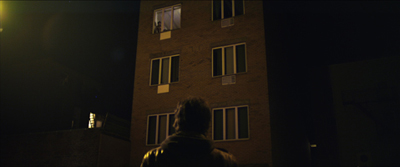 ZW: No, we worked backwards to do the short. We had the feature first, and then after the feature script was done, because this is my first feature we wanted to have some sort of proof of concept, something that we could show to folks to get them interested in the film and excited about the film, and demonstrate a bit the tone of the feature. So that’s how the short came to be. And the short was a really useful tool. And the Hammer to Nail [award] was really huge for us.
ZW: No, we worked backwards to do the short. We had the feature first, and then after the feature script was done, because this is my first feature we wanted to have some sort of proof of concept, something that we could show to folks to get them interested in the film and excited about the film, and demonstrate a bit the tone of the feature. So that’s how the short came to be. And the short was a really useful tool. And the Hammer to Nail [award] was really huge for us.
H2N: Oh good!
ZW: Well it really was! I mean it was like the first real major validation from an external reputable film institution that we received. And then Tully’s review was really great, and to be able to put that in your lookbook for your feature is an invaluable thing. And then Scott Macaulay wrote something about it after it won that, so with those two validations from these really great indie film folks, it really facilitated people believing in me, and believing in the film.
H2N: I noticed that the short film was also extremely visually striking. I loved the language that you used. Because there was so much camera movement, but it really felt motivated. It wasn’t like, let’s just swing the camera around because we have toys or because we can. It seems like from what you’re saying that was a very thought-out process as well. Did you have to do a lot of prep? Or did you get into the location and spend some time each day figuring that out? How much had you thought ahead?
ZW: I’m so glad you responded to it, it’s something I worked really hard on.
H2N: Well you don’t see it really often in indie films, to be honest with you. Especially with… I’m sure you shot on a digital camera?
ZW: Yeah.
H2N: I find that with those tools, now people are finally getting to the point where they know how to use them, and the lighting too. I mean Kate, the angles of her face… it was beautifully lit.
ZW: The DP Rob Leitzell is really talented. He shot Glory At Sea!, Benh Zeitlin’s short. Rob’s really, really great. And as far as how we put it together, there were a lot of really complicated shots in the movie, so it wasn’t the sort of thing where we could get to the set and [figure it out]. For example, the scene where Cody is checking the buzzers on 7th Street, and he’s on the phone lying to his boss, that was a 180-foot dolly shot. And so that shot, I think that was like… maybe it took eight hours to get that. And so that was the sort of thing where we went to the location multiple times in prep and figured it all out. Because it wasn’t just a dolly, it’s a dolly, and we’re panning, and we’re zooming, and we’re following him, and then he moves in the frame, and then we lose him, and then we catch him again. I mean, that was one of the more complicated ones. And then there’s another one toward the end of the film where we follow [Cody] into an apartment building, and he goes through an apartment building, and it’s a pretty long handheld shot. So yeah, we had to plan that all out really rigorously in advance.
H2N: And your producers were okay giving you eight hours to do a one-shot?
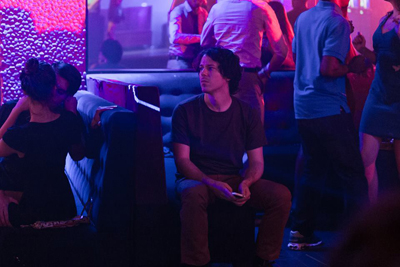 ZW: Yeah! They were. I felt really fortunate. The producers were Lucas Joaquin and Alex Scharfman. Lucas was the very first guy to come on board the film a couple of years ago, and the EPs Jay Van Hoy and Lars Knudsen. When I met Lucas I didn’t know a whole ton about him. I knew that he had been the SFX unit producer on Beasts of the Southern Wild, and I knew that he worked with Parts and Labor and did a lot of producing stuff for Jay and Lars, and was always on their films. So between the association with Beasts and the association with Parts and Labor, and also just getting to know him and talking with him, it seemed clear that he was the sort of guy who understands film as an art form in addition to understanding it as a business, and would allow me to make the film in the way that I wanted to make it. Because when I first met with him I said to him, “I just want to make the best film that I can possibly make. That’s my only concern.” So they were totally cool and totally supportive, and just a real joy to work with. I can’t say enough kind things about them. So yeah, all of that stuff was very planned out.
ZW: Yeah! They were. I felt really fortunate. The producers were Lucas Joaquin and Alex Scharfman. Lucas was the very first guy to come on board the film a couple of years ago, and the EPs Jay Van Hoy and Lars Knudsen. When I met Lucas I didn’t know a whole ton about him. I knew that he had been the SFX unit producer on Beasts of the Southern Wild, and I knew that he worked with Parts and Labor and did a lot of producing stuff for Jay and Lars, and was always on their films. So between the association with Beasts and the association with Parts and Labor, and also just getting to know him and talking with him, it seemed clear that he was the sort of guy who understands film as an art form in addition to understanding it as a business, and would allow me to make the film in the way that I wanted to make it. Because when I first met with him I said to him, “I just want to make the best film that I can possibly make. That’s my only concern.” So they were totally cool and totally supportive, and just a real joy to work with. I can’t say enough kind things about them. So yeah, all of that stuff was very planned out.
H2N: How many shooting days did you have?
ZW: 18.
H2N: Wow!
ZW: Yeah. [we laugh] It was tight.
H2N: That’s impressive. Did you find locations that were close to each other to make that work? It seemed like it was mostly set in the East Village.
ZW: Well what we did was we tried to limit the amount of company moves. When we were in the East Village we tried to stay in the East Village, and if there was a move it would be a really tiny little pushcart move down the block or something. But there were very few big company moves during the shoot. I think the only really big one was when we had our big extras day, because we knew that it was going to be tough to get a lot of extras for more than one day. So the day that we shot the opening dance club scene, which was in Club Europa in Greenpoint, we also shot the warehouse party scene, which was in a warehouse in Greenpoint. But other than that we were pretty good with that kind of stuff.
H2N: So did you use the same extras for both scenes?
ZW: Exactly.
H2N: And they just changed clothes?
ZW: They changed clothes, and you don’t see too many of their faces.
H2N: Right. Speaking of locations, I used to live on 7th Street a few years back. I loved how it felt like you really kept the geography of the neighborhood. You know how sometimes in New York movies people kind of take liberties? [he laughs] But in your film it seemed very authentic and specific, in that way it’s a New York story where it’s really set there but doesn’t feel like a fantasy or invented world. How did you end up shooting in the Cherry Tavern? It’s one of my favorite bars.
ZW: I had never been there before. I live on the Lower East Side/Chinatown border, so I don’t live in the East Village but I’m constantly in it. And I had never been to the Cherry Tavern before. We just wanted a dive bar that felt like the sort of place that you could wind up near Tompkins Square Park on a Saturday afternoon at like four and there would be like nobody there.
H2N: Yep! [we laugh]
ZW: So we went in, and it just felt like something out of The Deer Hunter, it was pretty cool. But I’m glad that the geography worked for you, that kind of bothers me too sometimes, it’s like somebody gets off the F [train] and they’re on the Upper East Side.
H2N: Right. I mean, I know sometimes on low-budget films there’s just nothing you can do about it, but I thought you did a really good job with that. And the apartments were the right size, and the right sort of look…
ZW: Oh good. Yeah, that drives me crazy! There are some films that you see, where it’s a character who’s supposed to be not making a whole ton of money, and then they have this like crazy giant loft apartment.
H2N: Was there something specifically “New York” to you about this story? Because New York and Berlin, the cities kind of play a bit of a role. Was it always set in New York, or that’s just where the film ended up happening?
ZW: Yeah, it was always set in New York… well, it’s sort of inter-connected, it’s a little complicated. I grew up just outside New York City, and I went to college in New York City, and I’ve lived in New York City non-stop since then. I really never lived anywhere other than the New York area. So I think it’s just a little bit how I look at the world is through the lens of the way this city functions. Because I grew up here, that leads to me sort of seeing the world through this city and its culture, I guess.
H2N: Have you been to Berlin?
ZW: I have not. I chose Berlin though because when I started writing this script it seemed like Berlin was the sort of city that everybody… when I graduated from NYU, folks that I knew either stayed in New York, or they did some sort of far-flung something. I mean there were some kids who did the Peace Corps or Teach For America, but one thing that was really common among the artier kids that I knew was people would go to Berlin. Someone described it like, “Berlin is like the Brooklyn of the world.” [H2N laughs] And it just seemed to be the sort of place that everyone kind of wanted to go to in that moment. I mean, the American artist expatriate community there is really strong. So that’s why I chose Berlin.
H2N: In terms of Virginia’s character, I noticed that in the film she starts out as a bit of a mystery, and then as the film progresses I feel like we get more and more access to her world and to her subjectivity. I was curious about that, I feel like you don’t see that shift very often. How did you design that and pace that in the story?
ZW: I’m really glad that comes across. My greatest fear with the film was that people would see it and they would have a really negative reaction to Virginia’s character. But I didn’t want it to be the sort of thing where you’re empathetic with her right from the start. Because I thought that it could be a sort of interesting exercise in empathy if you start with a character that an audience has a real antipathy towards, and really seems confused about, and then they slowly get to understand them better, and get to be more empathetic toward them as the film goes on.
H2N: It’s not a straight-forward relationship drama. There’s this other tone, which is also reflected in the visual style of the film. How did you weave the relationship and the thriller aspects of the story together?
ZW: I was really interested in the idea that the Internet seems sort of tailor-made to make stalkers out of people who otherwise wouldn’t be stalkers. I mean, I’ve been in that situation, where it’s like, I don’t think that I’m a particularly creepy or strange person… well, okay, I don’t know about strange, I’m probably a little strange. But, you know, I don’t think of myself as being too much of a creep or invader of privacy or whatever, but you know, you meet someone, and then maybe something happens, and all of a sudden you’re like Googling, and going through pages and pages. There’s something about being able to pursue information mediated only by technology, as opposed to having to interact with other humans, that brings out that side of people. So I think it’s kind of interesting in Cody’s journey, that as he’s searching for information it’s really technology that he’s interfacing with, it’s about getting to someone’s phone, it’s about getting to someone’s laptop. That is more what it’s about for him than interacting with other people. And of course if he’s suspicious, he could just straight-up ask [Virginia], “Hey, what’s going on?” But the idea that he would take this circuitous route through technology, as opposed to having a human, albeit complicated, moment, felt very important to me, in terms of expressing what the film is trying to get at.
H2N: And do you know where the film’s going next?
ZW: There are a bunch of things that are percolating, but I’m not sure if anything’s settled yet. But a bunch of announcements will definitely be made soon.
— Susanna Locascio








